Reviews
Nicholas Ray
USA, 1956
Credits
Review by Evan Kindley
Posted on 29 August 2008
Source bootleg DVD
Categories The Mystic: The Films of Nicholas Ray
“Doesn’t this stuff bore you? It’s always the same story,” Ed Avery asks his young son as he watches a Western on television. I have a hunch that this little aside may be a nod to the previous films on Nicholas Ray’s résumé, two of which were Westerns and most of which trafficked in genre conventions that were (supposed to be) equally rigid and formularized. Bigger Than Life, on the other hand, was a departure for Ray: a “message movie,” “ripped from the headlines,” perhaps intended to capitalize on some of the reputation for social relevance that Ray had earned with Rebel Without A Cause. It attempted to take on a subject - the rise of psychopharmacology - that was as timely as it was confusing, and the whole movie visibly strains against the pressure of dramatizing the unfamiliar. (“A theme so vital… we urge you to bring all your compassion and understanding to it!” the original tagline reads.) It gives the impression of a world-changing scientific discovery explained by somebody who doesn’t really understand it.
The film’s uncertainty may have begun with its script, loosely adapted from an article about cortisone abuse by New Yorker medical correspondent Berton Roueche. This original script was then rewritten extensively over the course of production by Ray, Mason, Gavin Lambert and Socialist playwright Clifford Odets, all closely supervised by the American Medical Association, who were worried about its negative depiction of the medical establishment. Given the number of screenwriters and regulatory institutions involved, it’s perhaps not surprising that the final film maintains at least three kinds of distance - journalistic, clinical and stylistic - from its subject, and that the point of view it adopts towards the world it explores is, to say the least, inconsistent.
But blame can’t be laid entirely on the writers; everything about Bigger Than Life suggests that Ray wasn’t sure how to film such a story. Rather than holding back, though, he goes for the gusto, shooting in Cinemascope, making use of dramatic low angles and blatantly artificial lighting, and scattering visual grace notes haphazardly throughout, many of which are themselves interesting but which aren’t really justified by their context on screen. The hospital section, for instance, allows Ray the chance to present several striking images (an x-ray picture of Avery’s stomach as he drinks barium; a superimposition of medical charts and graphs over shadowy shots of Mason writhing) but they mostly feel gimmicky, unintegrated into the feel of the film as a whole. The most effective moments, mise-en-scène-wise, take place inside the Avery family’s dwelling place, where an ominous strangeness haunts ordinary domestic set-ups, giving you the uneasy feeling that this nuclear family is about to be blown apart like the test site in Indiana Jones and the Crystal Skull. Ray’s camera, accustomed to grittier digs, seems uncomfortable in the plush environments of middle-class parlors and doctor’s waiting rooms, which it often watches from a corner or a point of low vantage. The discomfort is decisive; where a director like Douglas Sirk succeeds magnificently in making a film on two simultaneous symbolic levels, Ray utterly fails to produce a passable melodrama, alternating between flat expository passages and climaxes infected with an almost camp sense of desperation.
This is too bad, especially given the fact that Ray had a potentially very subtle actor in James Mason who he drives to Mabusean extremes. Ed Avery begins as a harried, preoccupied, Walter Mitty type, doing a lot of cringing and grimacing and scurrying around. A victim of the Protestant work ethic, Ed is a schoolteacher who lies to wife about having taken a second job as a dispatcher at a cab company. His home life doesn’t seem much more exciting (“Let’s face it, we’re dull,” he tells his wife, after a bridge game) and, really, the film suggests, there’s not much he can do of intrinsic dramatic interest but collapse. Once he does, his dire financial straits become even more evident (“I can’t afford this private room. I’m a schoolteacher, not a plumber!”). The political slant of the film, thus far, seems roughly populist: the little man can’t make it in America any more. It could be something out of Odets’ Waiting for Lefty, or Arthur Miller’s Death of a Salesman.
After going on cortisone, however, Ed undergoes a rapid transformation from a mousy loser into a manic, raving ideologue. This is perhaps the most interesting section of the film, and the hardest to read as an allegory for bohemian resistance to the monoculture (as Bigger Than Life often is interpreted: see here and here). Though he rebels against the strictures of family, work and church, Ed sounds like nothing so much as a conservative reactionary. Listen: “Childhood is a congenital disease and the purpose of education is to cure it”; “We’re breeding a race of moral midgets … If the republic is to survive, we’ve got to get back to teaching the good old virtues of hard work and self-discipline and a sense of duty.” His beef with society is not that it’s repressive, but that it’s too laissez-faire, and it’s far from clear which position the film itself endorses. Ed’s anger is also wrapped up with his middle-class rage, and his position as an indignant intellectual: he accosts the milkman and accuses him of being “filled with envy and malice towards me because I work with my mind.”
The latter outburst may be the key to the film’s divided sympathies, helping to explain why Ray seems to revile Ed’s sickness and glorify it at the same time. Sam Wasson notes that “[c]ommentators differ in their ideas as to what drew Ray to the film. While Lambert suggests that Bigger Than Life was for Ray “a chance to make a comment on the ‘wonder drug’ madness that afflicts America,” Geoff Andrew maintains that it was Ray’s frustration about the low wages paid to American teachers, while [Bernard] Eisenshitz cites the director’s “obsessive concern with anything permitting the manipulation of individuals.”1 To these possibilities I’d like to add a frustration at the limitations on the artist and intellectual in mid-century America, limitations Ray was feeling directly from the studio and the AMA as well as ambiently from the culture at large. If Ray, as some critics have argued, was responding to the climate of social conservatism that produced Joseph McCarthy, it was by imagining not a libertarian escape from those restraints but a more authoritarian reaction to them. As pathologically repressive as both alternatives may seem to us now, can we be sure where Ray, a disillusioned Communist and frustrated intellectual, would place his chips in such a contest?
Avery also develops an obsession with teaching his son the proper values and virtues, and this prepares the way for the final, most disastrous section of the movie, which has Ed plotting to reenact the story of Abraham and Isaac by sacrificing his son. Probably somebody was reading Kierkegaard on the set that day, and indeed the film is content to resolve half-understood psychopharmacology with half-digested existentialism. “They’ve reduced the mortality rate, they know how to keep us alive. But they don’t know why,” Ed says, an insight that will have to serve as the motto for the movie’s confusions. Ultimately Mason plays Ed Avery as a man of ressentiment, who distrusts the society he lives in without imagining a way to live without it, who resents the very structures that are keeping him alive. But I’m afraid I’m making the film sound too coherent. After a warped Hitchcockian fistfight with Walter Matthau (oh right, did I mention he plays Mason’s best friend?) set, inexplicably, to circus music, Ed ends up back in the hospital, properly medicated and pondering his temporary lapse of reason. “It was only Ed’s misuse of the drug” that caused him to go haywire, the doctors tell us; “all drugs are potentially dangerous”; furthermore, “Ed needs faith” in his family in order to keep him on the straight and narrow from now on. The final, bizarre invocation of Abraham Lincoln may be an allusion to the mid-century transformation of the Republican Party, or a Freudian condensation of the emancipator with the child-killer, or it may just be an excuse for the following ridiculous lines: “I was dreaming I walked with Lincoln. And he was big and ugly and beautiful as he was in life!” Bigger Than Life is big and ugly and beautiful by turns, but it bears little to no resemblance to life, or to the criticisms of it we call “art” and “politics.”
- Sam Wasson, “Bigger Than Life: The Picture, the Production, the Press,” 2005, Senses of Cinema.↩
More The Mystic: The Films of Nicholas Ray
-
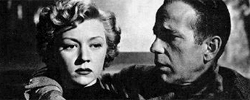
In A Lonely Place
1950 -
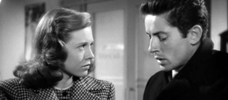
They Live By Night
1948 -
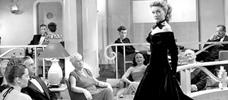
A Woman’s Secret
1949 -
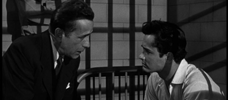
Knock on Any Door
1949 -

Born to Be Bad
1950 -
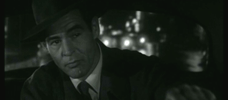
On Dangerous Ground
1952 -
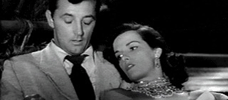
Macao
1952 -
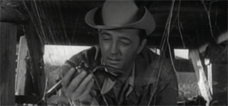
The Lusty Men
1952 -

Johnny Guitar
1954 -

High Green Wall
1954 -
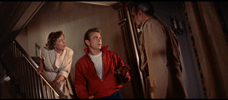
Rebel Without a Cause
1955 -
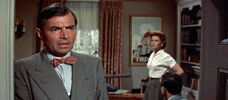
Bigger Than Life
1956 -
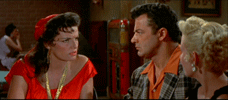
Hot Blood
1956 -

The True Story of Jesse James
1957 -
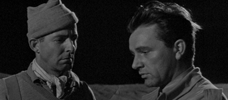
Bitter Victory
1957 -

Party Girl
1958 -

King of Kings
1961 -
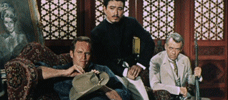
55 Days at Peking
1963 -

The Janitor
1974 -

We Can’t Go Home Again
1973-1976 -
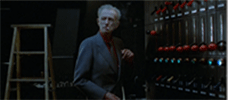
Lightning Over Water
1980
We don’t do comments anymore, but you may contact us here or find us on Twitter or Facebook.



